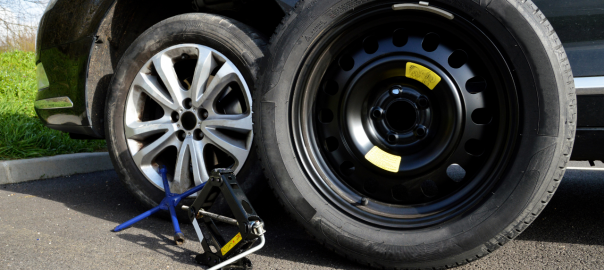Tire safety is paramount for a smooth and secure driving experience. Worn-out tires can compromise your vehicle’s performance, handling, and safety on the road. Knowing when to replace your tires is crucial to ensure optimal traction, braking, and overall tire performance.
In this blog, we will emphasize the importance of tire safety and provide you with key indicators to determine when it’s time to replace your worn-out tires. By understanding these signs, you can prioritize tire maintenance and replacement, ultimately enhancing your safety and the longevity of your tires.
1. Tread Depth: The Telltale Sign
The tread depth of your tires is a clear indicator of their condition and safety. As tires wear down over time, the depth of the tread diminishes, reducing their ability to grip the road. To assess the tread depth, use the penny test or a tread depth gauge. Insert a penny into the tire’s tread groove with Lincoln’s head facing downwards. When the top of Lincoln’s head becomes visible, it indicates that the tires need to be replaced.
2. Uneven Tread Wear: A Warning Sign
Inspecting the tread wear pattern is another essential aspect of tire safety. Uneven tread wear can indicate alignment issues, improper tire inflation, or suspension problems. Irregular wear patterns, such as cupping, scalloping, or feathering, are warning signs that the tires are not wearing evenly. If you notice these patterns, consult a professional tire repair service to diagnose the underlying cause and address it promptly. Correcting the issue and replacing the tires will help restore even wear and maintain optimal tire performance.
3. Age of the Tires: Time Matters
It is crucial to take into account the age of your tires, even if they seem to be in satisfactory condition. As tires age, the rubber compound deteriorates, leading to reduced performance and safety. The general guideline is to replace tires every six to ten years, regardless of their tread depth. Inspect the sidewall of the tire to locate the date of manufacture. The last four digits of the Department of Transportation (DOT) code indicate the week and year of manufacture.
4. Visible Damage: A Cause for Concern
Inspect your tires regularly for any visible signs of damage, such as cuts, bulges, cracks, or sidewall damage. These issues can compromise the structural integrity of the tire, leading to a higher risk of blowouts or sudden tire failure. If you notice any visible damage, it’s crucial to replace the tires immediately. Ignoring such damage can have severe consequences and pose a significant safety hazard on the road.
Conclusion
Tire safety is a critical aspect of vehicle maintenance and overall road safety. Recognizing the signs of worn-out tires, such as insufficient tread depth, uneven wear, age, and visible damage, is essential for timely tire replacement. Regularly inspect your tires and prioritize tire maintenance to ensure optimal performance, handling, and safety. If you require tire repair or replacement services, consult a trusted truck repair service that specializes in comprehensive tire repair and truck repair to ensure your safety and the longevity of your tires.
